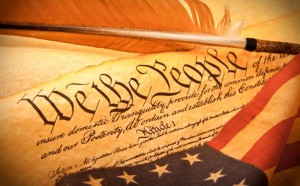People v Then
28 N.Y.3d 1170 (2017)
New York Court of Appeals
Decided on February 9, 2017
Issue: Whether the defendant was denied a fair trial where the defendant wore orange correctional pants for half a day of jury selection.
Holding: The Court of Appeals held that defendant was not denied a fair trial when he wore orange correctional pants for half a day of jury selection since there was no evidence the pants were visible to the jury. Without evidence that the jury actually saw the orange correctional pants, no bias concerning defendant’s attire could exist.
Facts: Defendant was arrested for robbery at gunpoint and charged with first and second degree robbery. Defendant informed the court that he could not obtain his own clothing for trial and requested adjournment. The trial judge denied the request but told the defendant that proper clothing could be provided.
The court noted that the defendant wore a black shirt and orange jumpsuit pants, but that the pants were likely not visible by the jury. By the next trial day, the defendant was to be provided with “civilian clothes.” Defense counsel requested an adjournment to the next day, but the judge denied this request.
The trial proceeded while the defendant wore the orange jumpsuit pants, and the prosecutor questioned the jury to ensure they didn’t notice the pants. The next day, the court noted that defendant was dressed in a proper suit. Defense counsel objected again to defendant being present in front of the jury in correctional pants the previous day. The jury found the defendant guilty of first and second degree robbery.
On appeal, the Appellate Division held that the court did not err and the defendant received a fair trial.
Analysis: The Court of Appeals noted that it has previously held that a defendant who appears before the jury in “convict’s attire–a continuing visual communication to the jury–is to deny” the right to appear “with the dignity and self-respect of a free and innocent” person. People v Roman, 35 NY2d 978 (1975). However, the concept of a “visual communication to the jury” cannot apply to the present case if there is no evidence that the jury could see “convict attire” on the defendant’s bottom half.
Similarly, the United States Supreme Court held that the Fourteenth Amendment prevents the State from compelling “an accused to stand trial before a jury while dressed in identifiable prison clothes.”Estelle v Williams, 425 US 501, 502 (1976).
If it had been shown that the defendant’s pants were visible to the jury, the rules of Roman?and Estelle would apply here. However, given the record of the court and the jury’s confirmation, the Court of Appeals held that no such concerns were implicated and the trial judge did not err in allowing jury selection to proceed.

